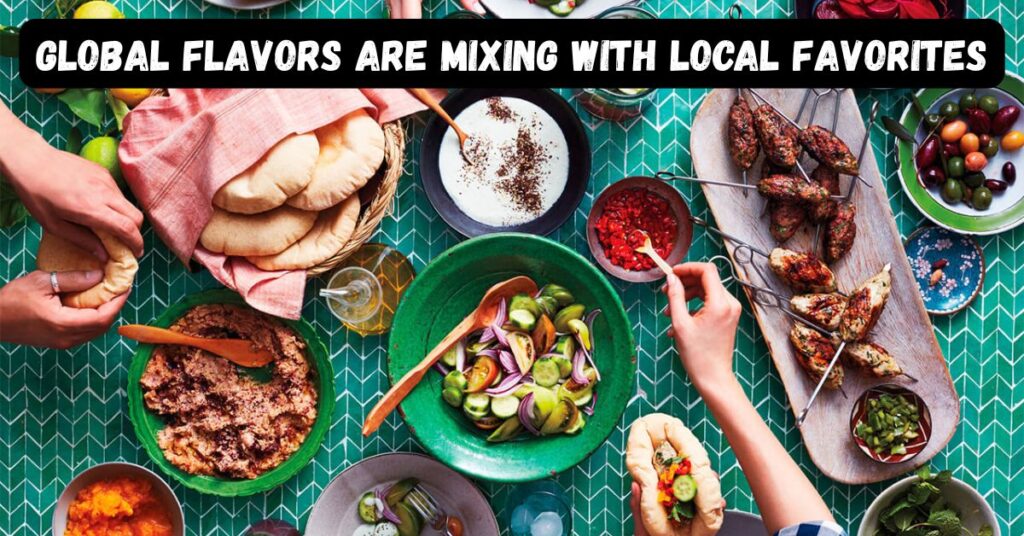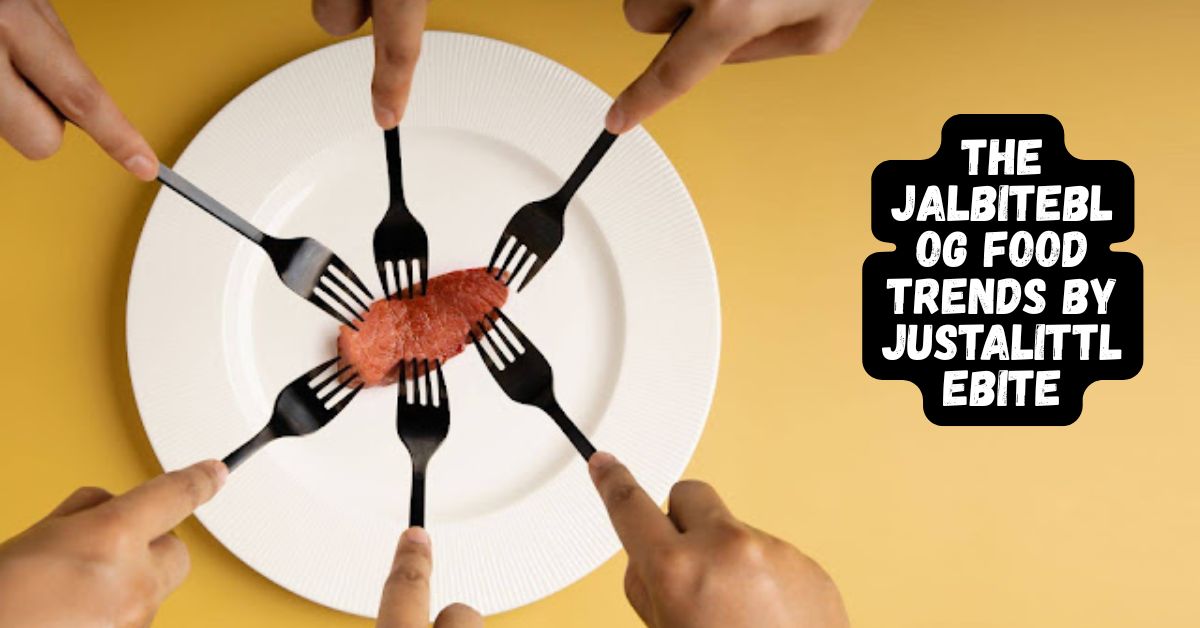Food trends constantly evolve to reflect changing tastes and values. JustALittleBite has captured the essence of current culinary trends that are reshaping how we approach food. The Jalbiteblog phenomenon embraces the philosophy of sampling and mindful eating, celebrating both taste and visual appeal.
Today’s food culture increasingly values sustainability, accessibility, and community alongside flavor. These trends represent not just passing fads but meaningful shifts in our relationship with food. Let’s explore how these innovative approaches are transforming everyday dining experiences.
Plant-Based Foods Are More Than Just an Option
Plant-based eating has transcended niche status to become mainstream. More omnivores now incorporate plant-based foods into their regular meals without fully committing to vegetarianism. The variety available extends far beyond traditional tofu and soy products. Creative options using jackfruit, lentils, and chickpeas offer nutritional benefits without sacrificing taste.
Even fast food chains now feature plant-based alternatives on their regular menus. This exploration of plant-forward eating reflects a broader interest in health-conscious choices. Home cooks experiment with mushroom-based meat substitutes that deliver satisfying umami flavors.
Plant-based milks like oat and almond have become pantry staples rather than specialty items. This shift represents not just dietary preference but environmental consciousness. The accessibility of these options has improved dramatically with better taste profiles and wider availability.
Zero-Waste Cooking Is Becoming a Habit
Zero-waste cooking practices have moved from fringe environmental activism to everyday kitchen habits. Home cooks increasingly view vegetable scraps as resources rather than trash. Carrot tops transform into flavorful pesos while potato peels become crispy snacks. This approach to food waste reduction connects with broader sustainable eating movements.
Restaurants showcase their commitment to sustainability by utilizing whole ingredients. Chefs design menus around using entire vegetables and animals, minimizing waste. Consumers appreciate transparent practices that honor ingredients and reduce environmental impact. Composting has become accessible for urban dwellers through community programs and compact home solutions.
The mindfulness required for zero-waste cooking creates deeper connections with food sources. Social media communities share creative solutions for using every part of produce. This shift represents both practical economics and ethical food values.
Global Flavors Are Mixing With Local Favorites
Fusion cuisine has evolved beyond gimmicky combinations to thoughtful cultural conversations on the plate. Korean gochujang enhances American barbecue while local maple syrup sweetens Japanese-inspired dishes. The global flavors trend encourages culinary exploration without appropriation.

Home cooks confidently experiment with international ingredients now widely available in mainstream stores. This approach to cooking celebrates cultural diversity through respectful adaptation. Food photography highlights these creative combinations, inspiring others to try new flavor profiles.
Cooking techniques from different traditions blend to create innovative approaches to local ingredients. Regional American cuisine incorporates elements from immigrant communities, creating distinctive local hybrids. The visual appeal of these cross-cultural dishes makes them perfect for social media food sharing. This fusion approach reflects our increasingly connected global food community.
High-Protein Breakfasts Are Taking Over
The humble breakfast has undergone a significant transformation with the rise of high-protein breakfast options. Greek yogurt parfaits loaded with nuts provide sustained energy throughout the morning. Egg-based dishes remain popular while incorporating more diverse flavor profiles and vegetables. Even traditional cereals now feature protein-enriched varieties to meet consumer demand.
The emphasis on morning protein connects to broader interest in balanced nutrition and metabolism. Small portions of protein-rich foods satisfy hunger more effectively than carbohydrate-heavy alternatives. Breakfast smoothies incorporating protein powders offer convenience without sacrificing nutritional value.
This trend aligns with fitness enthusiasts and busy professionals alike. The presentation of these morning meals often features vibrant colors from fresh fruits and vegetables. Portion-controlled breakfast options help maintain consistent energy levels throughout the day. This approach represents a more mindful start that sets the tone for healthier daily choices.
Functional Drinks Are More Than Just Refreshing
Functional beverages offer benefits beyond basic hydration or flavor. Drinks infused with probiotics support gut health while providing interesting flavor profiles. Adaptogenic herbs in teas and coffees address stress response and wellness. Collagen-enhanced beverages target skin health as part of beauty routines. The kombucha market continues to expand with creative flavor combinations and benefits.
Mushroom coffees deliver energy without jitters, appealing to sensitive coffee lovers. These beverages represent the merger of nutrition science with everyday consumption habits. Consumers increasingly seek products that multitask, providing both refreshment and health support.
The aesthetic appeal of these drinks, often featuring vibrant colors and garnishes, enhances their popularity. Sampling different functional beverages allows consumers to discover personal preferences. This category blurs the line between food, supplement, and enjoyment.
Meat-Based Snacks Are Holding Their Ground
Despite plant-based growth, meat-based snacks maintain strong popularity among certain dietary groups. Artisanal jerkies feature interesting spice profiles and ethical sourcing information. Meat chips provide protein-focused alternatives to traditional carb-heavy snacking options. This category appeals particularly to keto and paleo lifestyle followers.
Premium meat snacks emphasize quality sourcing and traditional processing methods. The portion control aspect of these products allows for mindful eating without overindulgence. Consumers appreciate transparent labeling about animal welfare and sustainable practices. The trend demonstrates that food movements often expand in multiple directions simultaneously.
These products frequently highlight their protein content as a key selling point. Their convenient packaging makes them suitable for active lifestyles and on-the-go consumption. This trend shows the continuing diversity of consumer preferences rather than a single direction.
More Adults Are Ordering From Kids’ Menus
The unexpected trend of adults choosing kids’ menu items reflects changing attitudes toward portion control. Smaller servings reduce food waste while providing adequate nourishment. The simplicity of these dishes appeals to those seeking comfort food without elaborate preparations.

Economic considerations make these lower-priced options attractive during challenging times. Restaurants increasingly acknowledge this trend by improving the quality of children’s offerings. This approach aligns with tapas-style dining concepts that celebrate small portions. The trend connects to growing awareness about appropriate serving sizes and overeating prevention.
Some establishments now offer “small plate” sections that serve similar functions without the stigma. This shift represents practical solutions to everyday dining challenges. Adults appreciate the straightforward nature of these simplified menu items. The trend demonstrates evolving attitudes toward dining satisfaction beyond quantity.
Tech Is Changing How People Cook and Eat
Technology has revolutionized home cooking through various innovations and platforms. Smart appliances with guided cooking programs make complex techniques accessible to novices. Meal kit deliveries solve planning challenges while reducing ingredient waste. Recipe apps with filtering functions accommodate dietary restrictions and preferences with ease.
READ THIS BLOG: Tech Hacks for PB Linux Gaming: Boost Performance and Enjoy Smooth Gameplay
Online grocery services expand access to specialty items previously limited to urban centers. Air fryers and multicookers have transformed weeknight cooking with speed and convenience. These technological innovations democratize cooking skills across experience levels. Virtual cooking classes connect home cooks with professional chefs for personalized instruction.
Kitchen gadgets designed for small spaces make cooking feasible in compact urban homes. This tech integration represents the evolution of cooking education and practice. The accessibility created through technology encourages more people to cook at home regularly.
Seasonal and Local Ingredients Are More Popular
The preference for seasonal and local ingredients continues to gain momentum among conscious consumers. Farmers’ markets thrive as community hubs where direct relationships form between growers and eaters. The flavor advantage of recently harvested produce drives interest in seasonal cooking. Sustainable eating practices emphasize reducing transportation impacts through local sourcing.
Restaurants prominently feature farm partnerships on menus as selling points. This movement connects urban dwellers with their regional food systems and agricultural heritage. The variety of local offerings encourages creative cooking with what’s available rather than imported options.
Seasonal eating naturally creates menu variety throughout the year. The environmental benefits of reduced food miles appeal to climate-conscious consumers. This approach honors regional food traditions while supporting local economic systems. The movement represents reconnection with place through food choices.
Frequently Asked Questions
What makes the Jalbiteblog trend different from other food movements?
The Jalbiteblog approach uniquely combines small portions with intense focus on presentation and sharing. It emphasizes experiencing many flavors mindfully rather than consuming large amounts of fewer foods.
How can I incorporate more plant-based foods without becoming fully vegetarian?
Start with “flexitarian” meal planning where meat becomes a flavoring rather than the center. Choose one day weekly for plant-only meals and gradually expand your plant-forward recipe collection.
What are the simplest zero-waste cooking practices for beginners?
Begin with vegetable scrap broth made from onion skins, carrot tops, and celery ends. Save parmesan rinds to flavor soups and freeze herb stems for future stocks.
How important is social media in current food trends?
Social media food sharing significantly drives trend adoption through visual inspiration. The community aspect creates accountability and encouragement while platforms provide endless creative ideas and techniques.
Which functional ingredients provide the most noticeable benefits?
Adaptogens like ashwagandha and rhodiola help manage stress responses. Probiotics support digestive health with noticeable effects. Protein additions create lasting fullness compared to carbohydrate-only options.
Conclusion
The Jalbiteblog approach to food celebrates thoughtful consumption through small portions, beautiful presentation, and communal sharing. Current food trends reflect deeper values around sustainability, health, and connection rather than mere fashion. The integration of technology with traditional cooking wisdom creates new possibilities for home cooks.
JustALittleBite captures the essence of contemporary food culture: mindful, diverse, and visually engaging. Whether embracing plant-based options, reducing waste, or exploring global flavors, today’s trends encourage more conscious relationships with what we eat. The future of food appears increasingly personalized, sustainable, and community-oriented. These evolving approaches to eating represent not just changing tastes but transforming values around nourishment, pleasure, and responsibility.

SEO expert focused on boosting online visibility and driving organic traffic. Passionate about data analysis, strategy, and the latest digital marketing trends.















